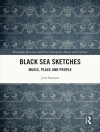Attitudes toward the role of the Arts in society are as varied as they are numerous, ranging from ‘the Arts are a (nice) diversion’ to ‘while many things may be necessary to make living possible, it is the Arts that make life worth living’. In the last few decades, research in the areas of psychology, neuroscience and sociology have underpinned the positive health benefits of the arts as well as artists’ roles in encouraging innovative thinking and the development of novel perspectives for the betterment of society. But, artists work within the existence of boundary conditions. For even the most subversive of artistic creations, the act of subversion is inherently referential to the condition that is being subverted. Furthermore, adaptation of "our modes of perception borrowed from the sensations" are hindered by the reality that "every word in the language refers to our ordinary perceptions" (Neils Bohrs, Nature Supplement, April 14, 1928), and is thus mediated by both the design capacities and limitations of the human form and the ways in which we express that experience. Hence, by examining multiple facets of the commonality of bodily experience Arts Biomechanics explores the human capacity to translate between the perspectives of self and other. Arts Biomechanics as a field of study uses the tools and methods of science to understanding the bodily experience within artistic creation. Desired aesthetic outcomes are influenced by: 1) how an artist might use metaphor or symbolism rooted in bodily experience, 2) how an artist might experience the act of creation, 3) how a performance of an artistic act may be better understood through analysis of physical skills necessary for that act, 4) how the act of challenging creative boundaries might challenge the capacity of the body, and 5) how representations and perception of the human condition are mediated by technology – "the medium is the message" (Marshal Mc Cluhan, Understanding Media: the Extensions of Man, 1964). In all of these areas Arts Biomechanics allows a deeper discourse, rooted in the commonality of bodily experience, exploring the relationships between modes of perception and communication of our individual experiences. Advances in Arts Biomechanics has twelve chapters covering music, dance, and the visual and media arts. It is organized in three parts. The first part, music research, has articles covering fundamental theory, proof of principles, musicians’ health, motor control/learning and its application in practice. Many of these are meaningful for both pedagogy and performance. The second part, dance articles, examines the biomechanics of dancing, kinematics and kinetics, injury prevention, and biomechanical foundations of intercultural representations of gender roles. Finally, two visual and media arts articles discuss motion capture use in performance and artistic creation as well as its communication to an audience, linking bodily gesture to the performative act whether on stage or on canvas. These innovative articles represent advances in thinking regarding biomechanics and the arts. By their very nature, using the tools and methods of science to better understand the visual and performance arts, all are interdisciplinary. We hope that the included articles challenge and inspire researchers and artists in the pursuit of transdisciplinary ways of knowing and creating in the arts.
Gongbing Shan
Advances in Arts Biomechanics [PDF ebook]
Advances in Arts Biomechanics [PDF ebook]
Mua cuốn sách điện tử này và nhận thêm 1 cuốn MIỄN PHÍ!
Ngôn ngữ Anh ● định dạng PDF ● Trang 240 ● ISBN 9781536156423 ● Biên tập viên Gongbing Shan ● Nhà xuất bản Nova Science Publishers, Inc. ● Được phát hành 2019 ● Có thể tải xuống 3 lần ● Tiền tệ EUR ● TÔI 7125609 ● Sao chép bảo vệ Adobe DRM
Yêu cầu trình đọc ebook có khả năng DRM












